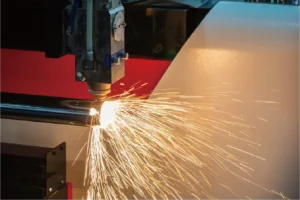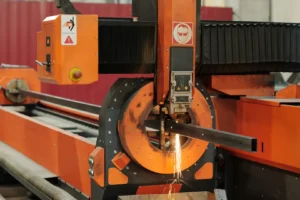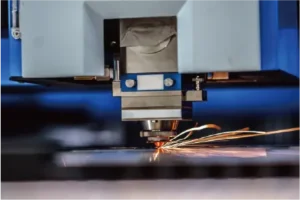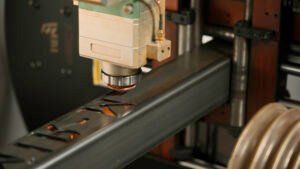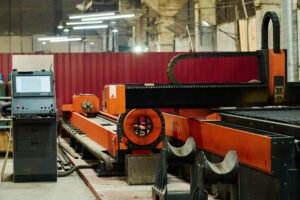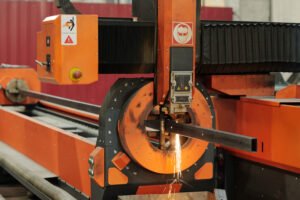Otomasyonda Trendler: Tüp Lazer Kesim Makineleri Değişime Nasıl Öncülük Ediyor?

The manufacturing landscape is rapidly evolving, driven by an urgent need for greater efficiency and precision. Businesses are constantly seeking innovative solutions to optimize production and reduce costs. This shift towards automation is redefining industry standards and pushing technological boundaries.
Automation trends are reshaping manufacturing through enhanced efficiency, reduced labor, and improved precision. Tube laser cutting machines are at the forefront, driving this shift by automating complex cutting processes and integrating seamlessly into smart factories, significantly boosting productivity and material utilization.
As an expert in metal fabrication with 25 years of experience, I've seen firsthand how crucial automation has become. The promise of intelligent machines and integrated systems is no longer a distant dream but a tangible reality, offering unparalleled opportunities for growth and innovation.
The acceleration of automation in manufacturing isn't just about adopting new machinery; it's a fundamental paradigm shift that redefines how businesses operate. We're witnessing a convergence of technologies like AI, IoT, and robotics, creating interconnected ecosystems that optimize every stage of production. For instance, according to a recent report by MarketsandMarkets, the global industrial automation market is projected to reach $326.1 billion by 20291, growing at a CAGR of 9.3%. This surge is driven by factors such as increasing labor costs, the demand for higher product quality, and the necessity for greater operational flexibility. Companies are no longer asking if they should automate, but nasıl to do it most effectively. This critical juncture requires a deep understanding of not just the technological capabilities, but also the strategic implications for their business model and workforce.
What are the current automation trends impacting manufacturing industries?
Manufacturers globally are embracing automation to address growing demands for speed, accuracy, and cost-effectiveness. This wave of innovation is transforming traditional production lines into intelligent, highly efficient systems.
Current automation trends in manufacturing include the rise of AI-driven robotics, IoT integration for real-time data, predictive maintenance, and sophisticated software for process optimization. These trends enhance productivity, reduce human error, and enable greater customization in production.
Over my two and a half decades in metal fabrication, I've observed a remarkable evolution in how businesses approach production. From my vantage point at MZBNL, a high-tech enterprise with 30+ patents, we understand that staying competitive means embracing cutting-edge solutions. The shift toward intelligent automation is not just a buzzword; it's a strategic imperative that transforms every aspect of manufacturing, from design to delivery. This comprehensive adoption is reshaping operational workflows, demanding new skills, and redefining the very concept of factory efficiency. We're talking about a fundamental rethinking of how products are made, where real-time data informs decisions and machines collaborate seamlessly to achieve unprecedented levels of precision and speed. The integration of advanced robotics, AI-powered analytics, and interconnected IoT devices is creating a smarter, more responsive manufacturing environment. This is about making production smarter, faster, and more adaptable to ever-changing market demands.
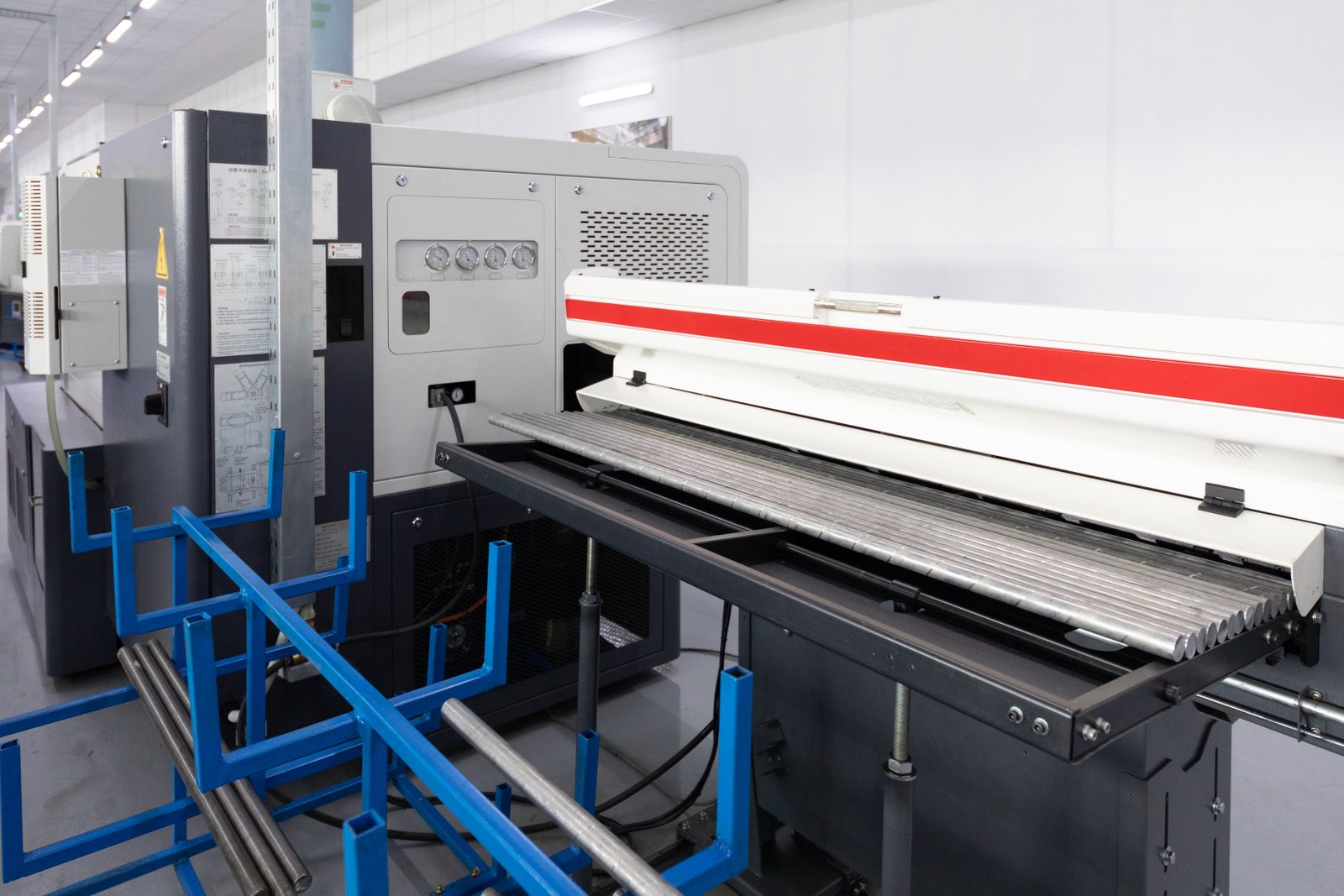
The manufacturing sector is experiencing a profound transformation, driven by several key automation trends. These trends are not isolated but interconnected, collectively pushing the boundaries of what’s possible in terms of efficiency, flexibility, and quality. Businesses are adopting these innovations to gain a competitive edge, streamline operations, and meet the escalating demands of modern consumers.
The Rise of Smart Factories and Industry 4.0
Kavramı Endüstri 4.02, or the Fourth Industrial Revolution, is at the core of current automation trends. It envisions fully interconnected and intelligent factories where machines, systems, and products communicate with each other. This creates a data-rich environment that allows for real-time decision-making, predictive maintenance, and optimized resource allocation. For instance, in an MZBNL smart factory, our laser tube cutting machines are integrated into a larger network, allowing for seamless data exchange from design to production. This integration drastically reduces human intervention, minimizes errors, and accelerates throughput. According to a report by Accenture, companies embracing Industry 4.0 principles have seen up to 30% reduction in operating costs and a 10-15% increase in production output. The data collected from these smart factories provides invaluable insights into bottlenecks, performance metrics, and potential areas for improvement, creating a continuous feedback loop for optimization.
The Proliferation of AI and Machine Learning in Manufacturing
Artificial Intelligence (AI) and Machine Learning (ML) are no longer confined to theoretical discussions; they are actively deployed on factory floors to enhance automation. AI algorithms are used for predictive maintenance, anticipating equipment failures before they occur, thereby minimizing downtime. They also optimize production schedules, manage inventory, and even fine-tune machine parameters for optimal performance. For example, our BNL laser cutting machines leverage AI to analyze cutting patterns and material properties, suggesting adjustments that lead to higher precision and reduced waste. A study by McKinsey & Company estimates that AI could add $13 trillion to global economic output by 2030, with a significant portion of this coming from increased productivity in manufacturing. This is particularly relevant for businesses like Ahmed Al-Farsi’s metal fabrication company in the UAE, where optimizing material use and reducing operational costs are paramount for profitability. AI-powered vision systems are also revolutionizing quality control, identifying defects at speeds and accuracies impossible for human operators.
Robotics and Collaborative Automation
Robotics continues to advance, with robots becoming more sophisticated, versatile, and collaborative. Collaborative robots, or cobots, are designed to work alongside human operators, enhancing safety and efficiency. They can handle repetitive or hazardous tasks, freeing up human workers for more complex problem-solving and creative roles. In metal fabrication, robotic arms are increasingly used for loading and unloading materials, welding, and even intricate assembly processes, leading to significant boosts in productivity. For instance, in the automotive sector, which is a key market for MZBNL's automatic punching and cutting integrated machines, robots are indispensable for precision welding and assembly, contributing to faster production cycles and higher quality vehicles. Companies like General Motors have invested heavily in robotics, reporting up to 20% improvement in production line efficiency. The integration of robots also addresses labor shortages in skilled trades, allowing businesses to maintain high production volumes even with a smaller human workforce.
| Automation Trend | Key Benefits | Industry Application Examples | Impact on Productivity |
|---|---|---|---|
| Smart Factories/Industry 4.0 | Real-time data, optimized resource allocation | Automotive, Electronics, Metal Fabrication | Up to +30% |
| AI/Machine Learning | Predictive maintenance, process optimization | Chemical, Pharmaceuticals, Aerospace | Up to +25% |
| Robotics/Cobots | Enhanced safety, increased output | Food & Beverage, Logistics, General Manufacturing | Up to +40% |
Industry 4.0 reduces operating costsDoğru
Smart factories implementing Industry 4.0 principles have demonstrated up to 30% reduction in operating costs through optimized resource allocation and reduced downtime.
AI replaces all human workersYanlış
While AI enhances manufacturing efficiency, it primarily augments human capabilities by handling repetitive tasks, allowing workers to focus on complex problem-solving and creative roles.
How are tube laser cutting machines contributing to the automation revolution?
Tube laser cutting machines are at the forefront of the automation revolution in metal fabrication. They offer unparalleled precision and speed, transforming how businesses handle complex tube processing tasks.
Tube laser cutting machines significantly contribute to automation by enabling high-speed, high-precision, and complex cutting of tubes with minimal human intervention. Their integration into automated workflows enhances material utilization, reduces waste, and streamlines production processes, making them essential for modern manufacturing.
Having witnessed the evolution of metal fabrication over 25 years at MZBNL3, I can confidently say that tube laser cutting machines are game-changers. Their impact extends beyond simple cutting; they are central to the automation revolution, redefining efficiency and precision in ways we once only dreamed of. From our experience supplying to diverse markets like Southeast Asia and North America4, we've seen how these machines empower manufacturers to achieve levels of complexity and speed that manual processes simply cannot match. This transformative capability is not just about cutting metal; it's about optimizing entire production lines, enabling businesses to meet tighter deadlines, produce intricate designs, and drastically reduce operational costs. The integration of these advanced systems into automated workflows allows for a seamless transition from raw material to finished product, minimizing human error and maximizing throughput.
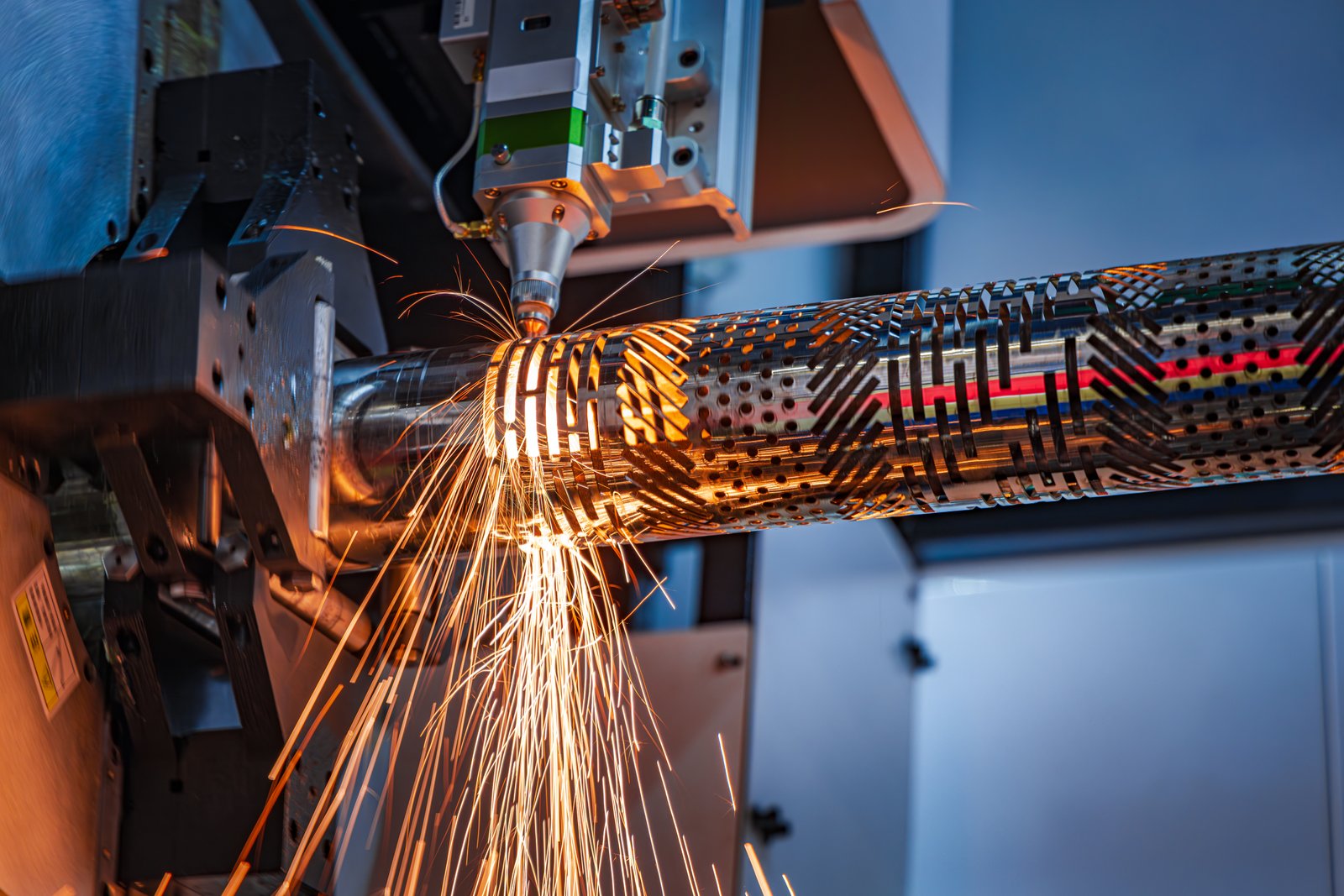
Tube laser cutting machines are not merely tools; they are sophisticated automated systems that embody the core principles of modern manufacturing. Their ability to deliver precision, speed, and versatility has made them indispensable in various industries, from furniture and sanitary ware to automotive and construction.
Precision and Efficiency through Digital Control
The primary contribution of tube laser cutting machines to automation lies in their exceptional precision and efficiency, driven by advanced digital control systems. Unlike traditional methods that involve multiple steps like sawing, drilling, and deburring, a tube laser cutter performs all these operations in a single pass. This multi-process integration is a hallmark of automation, reducing lead times and eliminating manual handling errors. For example, MZBNL's machines can start cutting without complex CAD drawings for standard tube types, significantly shortening setup time—a crucial feature for clients like Ahmed Al-Farsi who prioritize quick turnaround. The digital control ensures that every cut is identical, maintaining high quality standards across large production runs. This level of repeatable accuracy is vital for industries where tight tolerances are critical, such as in the production of automotive parts or medical equipment. The ability to achieve complex geometries with high precision reduces the need for subsequent machining operations, further streamlining the manufacturing process and reducing overall production costs.
Enhanced Material Utilization and Waste Reduction
Another significant contribution is their ability to maximize material utilization and minimize waste. Conventional cutting methods often leave significant amounts of unusable tail material, leading to increased costs and environmental impact. BNL's innovative Zero-Waste Tail Material Innovation, which calculates cutting from the rear chuck, virtually eliminates leftover tail material. This not only reduces raw material costs but also contributes to sustainable manufacturing practices—a growing concern for businesses worldwide. For a business owner like Ahmed, who relies on efficient contract-based fabrication, this translates directly into higher profit margins. According to a report by the European Federation of Steel Tube and Pipe Manufacturers, optimized cutting strategies can reduce material waste by up to 15-20% in tube processing operations. This benefit is particularly pronounced when dealing with expensive specialty alloys, where even a small reduction in waste can lead to substantial savings.
Seamless Integration into Automated Workflows
Tube laser cutting machines are designed for seamless integration into larger automated workflows. With features like automatic loading and unloading, they can operate continuously with minimal human supervision, becoming a vital link in fully automated production lines. Our Front-Feeding Innovation, for example, increases feeding efficiency by 40% and reduces operator labor intensity by 40%, demonstrating how these machines enhance overall productivity and workplace ergonomics. This level of automation is essential for scaling production and meeting the demands of a global market. For example, in a modern furniture manufacturing plant, a tube laser cutting machine can be integrated with robotic welding cells and automated bending machines, creating a continuous flow from raw tube to finished product. This interconnectedness allows for remote monitoring and control, further enhancing operational efficiency and responsiveness. The ability to integrate with existing ERP (Enterprise Resource Planning) and MES (Manufacturing Execution Systems) also facilitates better production planning and resource management, transforming individual machines into integral components of a cohesive smart factory.
| Özellik | Contribution to Automation | Benefits for Manufacturers |
|---|---|---|
| Precision Digital Control | Enables complex cuts, multi-process integration | Higher quality, reduced lead times, fewer errors |
| Material Optimization (Zero-Waste) | Minimizes waste, maximizes material utilization | Cost savings, sustainable practices, higher profitability |
| Automated Loading/Unloading | Continuous operation, reduced labor intensity | Increased throughput, improved ergonomics, scalability |
Laser cutters enable multi-process integrationDoğru
Tube laser cutting machines combine sawing, drilling and deburring into a single automated process, eliminating multiple manual steps.
Traditional methods waste less materialYanlış
Conventional cutting methods actually produce 15-20% more waste compared to optimized laser cutting with zero-waste innovations.
What challenges do industries face when integrating tube laser cutting machines into automated workflows?
Integrating advanced tube laser cutting machines into existing automated workflows presents unique challenges for industries. These hurdles range from technical complexities to the need for specialized skills and significant upfront investments.
Industries face challenges in integrating tube laser cutting machines, including high initial investment, the need for skilled operators, complex software integration, and ensuring compatibility with existing infrastructure. Overcoming these requires strategic planning, comprehensive training, and robust technical support to maximize automated system efficiency.
As someone who has spent a quarter-century navigating the intricacies of metal fabrication and witnessing its evolution, I understand that adopting new technologies, particularly those as sophisticated as tube laser cutting machines, is rarely a simple plug-and-play scenario. At MZBNL, we've engaged with countless global enterprise clients, and the recurring theme is that while the benefits of automation are clear, the path to seamless integration can be fraught with obstacles. These challenges are not merely technical; they often encompass operational, financial, and human resource considerations that require careful planning and a strategic approach. It's about more than just buying a machine; it's about transforming an entire production ecosystem. Companies must consider everything from the compatibility of new software with legacy systems5 to the retraining of existing staff and the development of new maintenance protocols. Overcoming these hurdles is crucial for unlocking the full potential of automated tube laser cutting and truly realizing the promised efficiencies and cost savings.

While the advantages of integrating tube laser cutting machines into automated workflows are undeniable, the process is not without its complexities. Industries must address a range of challenges to ensure a smooth transition and maximize their return on investment.
High Initial Investment and Return on Investment (ROI) Justification
One of the most significant challenges is the substantial initial investment required for high-tech tube laser cutting machines and their associated automation infrastructure. This includes not only the cost of the machine itself but also software licenses, robotic loading systems, material handling equipment, and factory modifications. For many small to mid-sized businesses, like Ahmed Al-Farsi's operation, justifying this significant capital outlay can be daunting. They need a clear and compelling ROI calculation that demonstrates how the machine will reduce labor costs, minimize material waste, increase production speed, and open new revenue streams through enhanced capabilities. For example, while a basic tube laser cutter might cost upwards of $200,000, a fully automated system with integrated punching and feeding could easily exceed $500,000. According to a report by the Association for Manufacturing Technology, the average payback period for advanced manufacturing equipment can range from 2 to 5 years, depending on the scale of integration and the specific industry. Businesses must conduct thorough feasibility studies and cost-benefit analyses to validate their investment and ensure it aligns with their long-term strategic goals.
The Need for Skilled Operators and Technicians
Despite the goal of automation being reduced human intervention, the integration of advanced machinery like tube laser cutters often creates a demand for a new type of skilled workforce. Operators need to be proficient in programming, troubleshooting, and maintaining these complex digital systems. This often means retraining existing staff or hiring new talent, which can be a time-consuming and expensive process. For instance, while BNL's No-CAD system simplifies operation to just one day of on-site training for standard tasks, advanced troubleshooting and maintenance still require specialized knowledge. This was a pain point for Ahmed, whose previous machines required skilled CAD operators and whose business suffered from high operator turnover. The scarcity of such skilled professionals in the market can lead to recruitment challenges and increased labor costs. A study by Deloitte and The Manufacturing Institute highlighted that 2.1 million manufacturing jobs could go unfilled by 2030 due to a skills gap, emphasizing the need for comprehensive training programs and talent development strategies within companies.
Integration with Existing Legacy Systems
Many manufacturing facilities operate with a mix of old and new machinery, often running on disparate software platforms. Integrating a new, highly automated tube laser cutting machine into this existing "legacy" infrastructure can be technically challenging. Ensuring seamless data flow between different systems—from CAD/CAM software to ERP (Enterprise Resource Planning) and MES (Manufacturing Execution Systems)—requires robust integration solutions and often custom programming. Incompatible data formats, lack of standardized communication protocols, and security concerns can all complicate the process. For example, a new tube laser cutter might generate data in a format that older inventory management systems cannot read, leading to manual data entry and undermining the benefits of automation. This is where turnkey solutions, like those offered by MZBNL, become crucial, as they are designed for easier integration and offer comprehensive support. According to IndustryWeek, a significant portion of manufacturing companies struggle with IT/OT (Information Technology/Operational Technology) convergence, indicating the complexity of integrating diverse systems.
| Meydan Okuma | Açıklama | Impact on Integration |
|---|---|---|
| Yüksek İlk Yatırım | Significant capital required for machinery, software, and infrastructure | ROI justification, financial burden |
| Skilled Workforce Requirement | Need for specialized operators and technicians for programming and maintenance | Training costs, recruitment difficulties, skills gap |
| Legacy System Integration | Compatibility issues between new and old machinery/software | Data silos, manual workarounds, technical complexity |
Integration requires skilled operatorsDoğru
Even automated tube laser cutting machines need trained professionals for programming and maintenance.
Integration is purely technicalYanlış
Successful integration involves financial, operational and human resource considerations beyond just technical aspects.
How can tube laser cutting technology be leveraged to overcome automation challenges?
Tube laser cutting technology offers powerful solutions to many of the challenges industries face in automation. Its inherent capabilities can directly address issues of complexity, cost, and skill gaps.
Tube laser cutting technology overcomes automation challenges by simplifying operations through No-CAD systems, reducing material waste for cost savings, and offering integrated multi-process capabilities. These innovations enhance ease of use, boost efficiency, and minimize the need for highly specialized skills, making automation more accessible and cost-effective.
My 25 years in metal fabrication have shown me that innovation in laser cutting6 is key to overcoming obstacles. At MZBNL, we’ve always focused on developing solutions that not only meet industry demands but also simplify complex processes. Tube laser cutting technology, particularly with our proprietary advancements, is a prime example of how intelligent design can directly address common automation challenges. We've seen how our innovations have transformed operations for clients across diverse regions, from the burgeoning markets of Southeast Asia to the demanding industries of North America. It’s not just about what the machine olabilir do, but how it streamlines workflows, reduces training burdens, and ultimately empowers businesses to achieve greater efficiency and profitability. Our commitment to integrated R&D means we’re constantly refining our machines to be more intuitive, more efficient, and more seamlessly integrated into automated production environments.
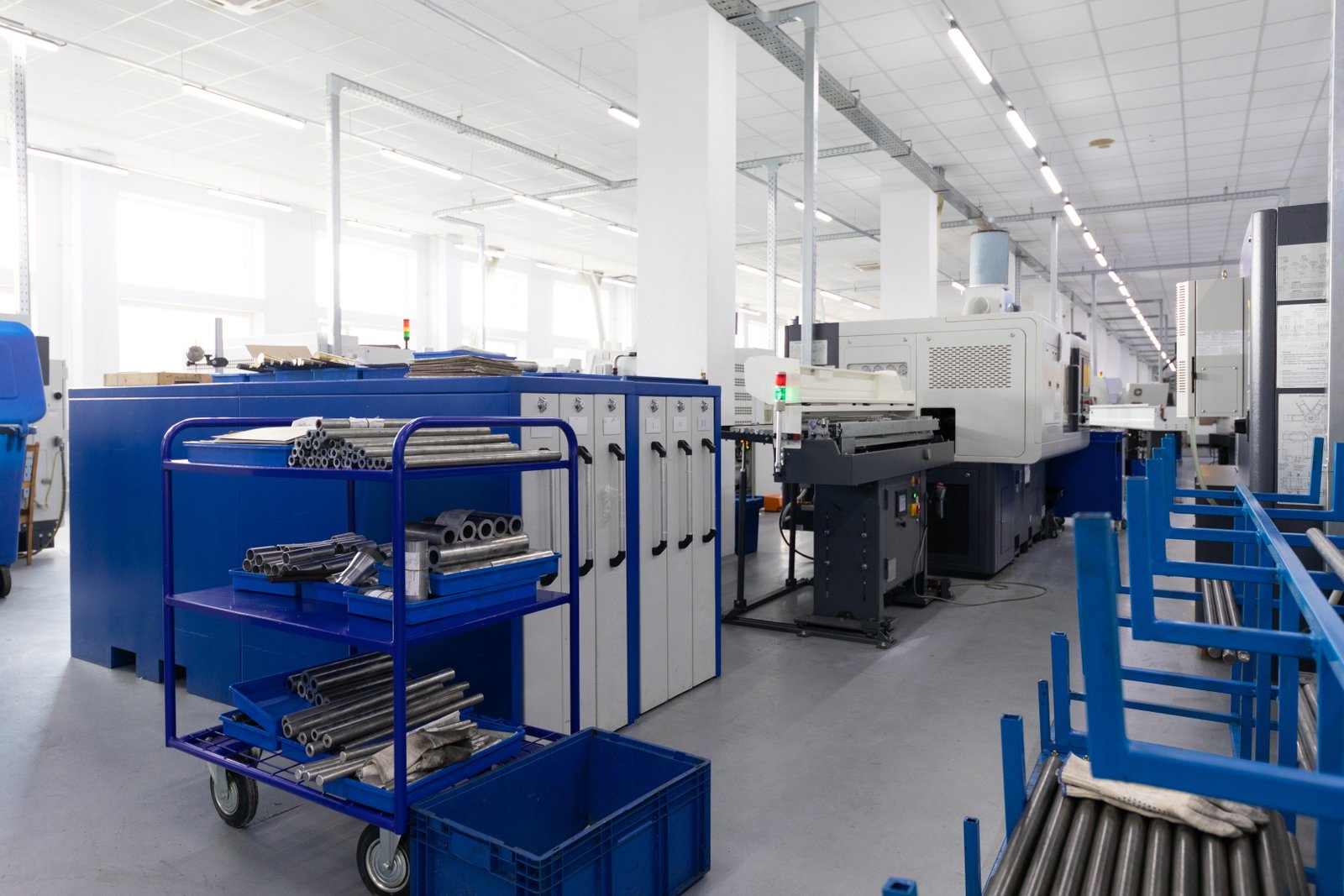
Leveraging advanced tube laser cutting technology is not just about adopting new machinery; it's about strategically choosing systems that are designed to mitigate the inherent challenges of automation. By focusing on specific innovations, businesses can significantly simplify their integration journey.
Simplifying Operations with No-CAD Systems
One of the most significant ways tube laser cutting technology overcomes automation challenges is through the simplification of operational processes, particularly with features like MZBNL's No-CAD Operating System. Traditional laser cutting often demands highly skilled operators proficient in complex 3D CAD software, which contributes to training burdens and operator turnover—a pain point Ahmed Al-Farsi experienced. Our No-CAD system allows operators to process standard tube types and hole patterns by simply entering parameters, eliminating the need for intricate drawings. This innovation dramatically lowers the skill threshold, shortening setup time and reducing on-site training from 15 days to just 1 day. This ease of use directly addresses the challenge of finding and retaining skilled labor, making advanced automation accessible to a broader workforce. By simplifying the front-end operation, businesses can deploy automation faster and with less reliance on a scarce talent pool. For example, a small metal fabrication shop can quickly train existing staff to operate the machine efficiently, reducing the need for costly external training or specialized hires. This streamlined approach minimizes downtime associated with learning curves and boosts immediate productivity.
Maximizing Material Utilization for Cost-Effectiveness
Cost-effectiveness is a major hurdle in automation, particularly due to the initial investment. Tube laser cutting technology, especially with innovations like MZBNL's Sıfır Atık Kuyruk Malzemesi İnovasyonu7, directly addresses this by maximizing material utilization and reducing waste. Conventional systems generate unusable tail material, leading to significant material loss. By redesigning the cutting logic to calculate from the rear chuck, our system eliminates leftover tail material as long as the remaining section is smaller than the product length. This significantly reduces raw material consumption, turning what would be waste into usable parts. For a business like Ahmed's, which operates on a contract-based fabrication model, every reduction in material waste directly translates into higher profit margins. According to data from the European Steel Association (Eurofer), material costs often account for 40-60% of total production costs in metalworking. A 5-10% reduction in material waste through optimized cutting can lead to substantial annual savings, effectively shortening the ROI period for the machine. This material optimization is a powerful lever for overcoming the financial challenges of automation.
Streamlined Integration through Multi-Process Capabilities
The complexity of integrating new machinery into existing automated workflows is a common challenge. Tube laser cutting machines with multi-process integration capabilities offer a streamlined solution. Instead of needing separate machines for cutting, punching, drilling, and deburring, a single tube laser cutter can perform all these functions. This reduces the number of machines required, simplifies system integration, and minimizes potential compatibility issues. For instance, MZBNL's Automatic Punching & Cutting Integrated Machine streamlines the entire process, requiring fewer interfaces and less complex software integration. This multi-functionality not only saves floor space but also reduces the complexity of managing multiple vendors and software systems. By consolidating processes into one machine, businesses can achieve a more cohesive and efficient automated line. This integrated approach also simplifies maintenance and troubleshooting, as operators only need to learn and manage one primary system rather than several disparate ones. Such comprehensive solutions mitigate the technical hurdles often associated with automation, allowing for a more seamless deployment and operation.
| Solution Leveraged | How it Overcomes Challenges | Benefits for Automation Integration |
|---|---|---|
| No-CAD İşletim Sistemi | Simplifies operation, reduces skill requirement | Faster training, lower labor costs, broader talent pool |
| Sıfır Atık Kuyruk Malzemesi İnovasyonu | Maximizes material utilization, reduces waste | Significant cost savings, improved ROI, sustainable production |
| Multi-Process Integration | Consolidates cutting, punching, drilling into one machine | Simplified integration, reduced complexity, space saving |
CAD'siz sistemler eğitim süresini kısaltırDoğru
The No-CAD system cuts operator training from 15 days to 1 day by eliminating complex CAD requirements.
Material waste accounts for 60% of costsYanlış
Material costs account for 40-60% of production costs, but waste is only a portion of this.
What strategies can ensure successful implementation of tube laser cutting machines in automated systems?
Successful implementation of tube laser cutting machines within automated systems requires a comprehensive strategy that goes beyond mere machine acquisition. It demands careful planning, thorough training, and a focus on long-term support.
Successful implementation of tube laser cutting machines in automated systems relies on detailed planning, robust operator training, seamless software integration, and a focus on post-sales support. Prioritizing data-driven decision-making, choosing adaptable solutions, and fostering collaboration between teams are also crucial for maximizing long-term efficiency and ROI.
Drawing on my 25 years of experience in metal fabrication, I’ve seen countless implementations, both successful and challenging. The key differentiator always lies in the strategic approach. At MZBNL, our journey has been about delivering not just machines, but complete solutions that empower our global enterprise clients8. This means recognizing that the success of a tube laser cutting machine in an automated system isn't just about the machine itself, but how effectively it integrates into a company's overall operations, its workforce, and its future growth plans. We understand that a seamless transition and sustained performance are paramount, which is why we emphasize a holistic strategy encompassing everything from initial consultation to ongoing technical support. Our goal is to ensure that every investment our clients make translates into tangible improvements in efficiency, productivity, and profitability.

Ensuring the successful implementation of tube laser cutting machines within automated systems demands a multifaceted strategy. It involves careful planning, robust training, and a strong emphasis on post-sales support9, all aimed at maximizing operational efficiency and long-term value.
Comprehensive Planning and Phased Implementation
Successful integration begins long before the machine arrives on the factory floor. It requires comprehensive planning that considers existing infrastructure, future production needs, and potential bottlenecks. Businesses should conduct detailed feasibility studies, cost-benefit analyses, and workflow simulations to determine the optimal placement and configuration of the tube laser cutting machine within their automated system. A phased implementation approach is often beneficial, allowing companies to integrate the new technology incrementally, minimizing disruption to ongoing production. For instance, a company might start by automating the cutting process, then gradually integrate automated loading/unloading and real-time data feedback systems. This allows for continuous adjustments and learning throughout the process. According to a report by the Boston Consulting Group, companies that implement automation in phases experience fewer operational disruptions and achieve higher success rates compared to those attempting a "big bang" approach. This strategic planning also includes identifying key performance indicators (KPIs) to track progress and ensure the automation initiative aligns with business objectives.
Robust Training and Skill Development Programs
While advanced tube laser cutting machines, like MZBNL's, are designed for ease of use (e.g., No-CAD system requiring only 1 day of training), ongoing training and skill development are crucial for maximizing their potential. This goes beyond basic operation and includes maintenance, troubleshooting, and advanced programming for complex tasks. Companies should invest in continuous learning programs for their operators and technicians, perhaps collaborating with suppliers like MZBNL for specialized training sessions. For Ahmed Al-Farsi, who values post-sales training and support, this is a critical factor. Training should encompass both the operational aspects of the machine and the broader context of automated workflows, ensuring that staff understand how their roles contribute to the overall efficiency of the system. According to a survey by the National Association of Manufacturers, companies that invest in employee training see a 10-15% increase in productivity and a significant reduction in machinery downtime. This investment in human capital ensures that the workforce is equipped to handle the evolving demands of an automated environment.
Strong Post-Sales Support and Long-Term Partnership
The relationship with the machine supplier extends far beyond the initial purchase. Strong post-sales support, including technical assistance, spare parts availability, and remote diagnostics, is paramount for successful long-term operation. Companies should prioritize suppliers with a proven track record of excellent customer service and a global presence, especially for businesses like Ahmed's that are looking for local agent or distributor presence. MZBNL's business model, which integrates R&D, manufacturing, sales, and service, ensures comprehensive support throughout the machine's lifecycle. Regular maintenance, software updates, and expert troubleshooting can prevent costly downtime and extend the lifespan of the equipment. Furthermore, establishing a long-term partnership with the supplier allows for continuous improvement and access to new technological advancements. This proactive approach to support ensures that any issues are addressed promptly, minimizing disruptions and maximizing the return on the automation investment. The availability of spare parts and clear communication channels are also vital for maintaining operational continuity.
| Strateji | Önemli Eylemler | Beklenen Sonuç |
|---|---|---|
| Comprehensive Planning | Feasibility studies, workflow simulations, phased approach | Smoother integration, reduced disruption, optimized setup |
| Robust Training & Skill Development | Ongoing training for operators and technicians | Higher productivity, reduced downtime, skilled workforce |
| Strong Post-Sales Support & Partnership | Technical assistance, spare parts, remote diagnostics | Minimized downtime, extended machine lifespan, continuous improvement |
Phased implementation reduces disruptionsDoğru
The article specifically mentions that companies implementing automation in phases experience fewer operational disruptions compared to "big bang" approaches.
Basic training is sufficient for operatorsYanlış
The text emphasizes that ongoing training is crucial, including maintenance, troubleshooting, and advanced programming, not just basic operation.
Sonuç
The automation revolution is transforming manufacturing, with tube laser cutting machines at its vanguard. By embracing innovations like No-CAD systems, zero-waste capabilities, and multi-process integration, industries can overcome challenges and achieve unprecedented efficiency and profitability.
-
Learn about market expansion and financial implications for global businesses ↩
-
Explore the concept of smart factories and its benefits for modern industries ↩
-
Learn how MZBNL revolutionizes metal fabrication with cutting-edge automation technologies. ↩
-
Understand the impact of laser cutting technology in diverse international markets. ↩
-
Understand challenges posed by legacy systems in adopting new automated technologies. ↩
-
Discover how laser cutting technology innovations address complexity and skill gaps in automation. ↩
-
Understand how zero-waste innovations boost cost-effectiveness in tube laser cutting. ↩
-
Learn how complete solutions enhance efficiency and client success ↩
-
Understand the value of training and support in maximizing equipment performance ↩
Sorularınız mı var veya daha fazla bilgiye mi ihtiyacınız var?
Kişiselleştirilmiş yardım ve uzman tavsiyesi için bizimle iletişime geçin.


